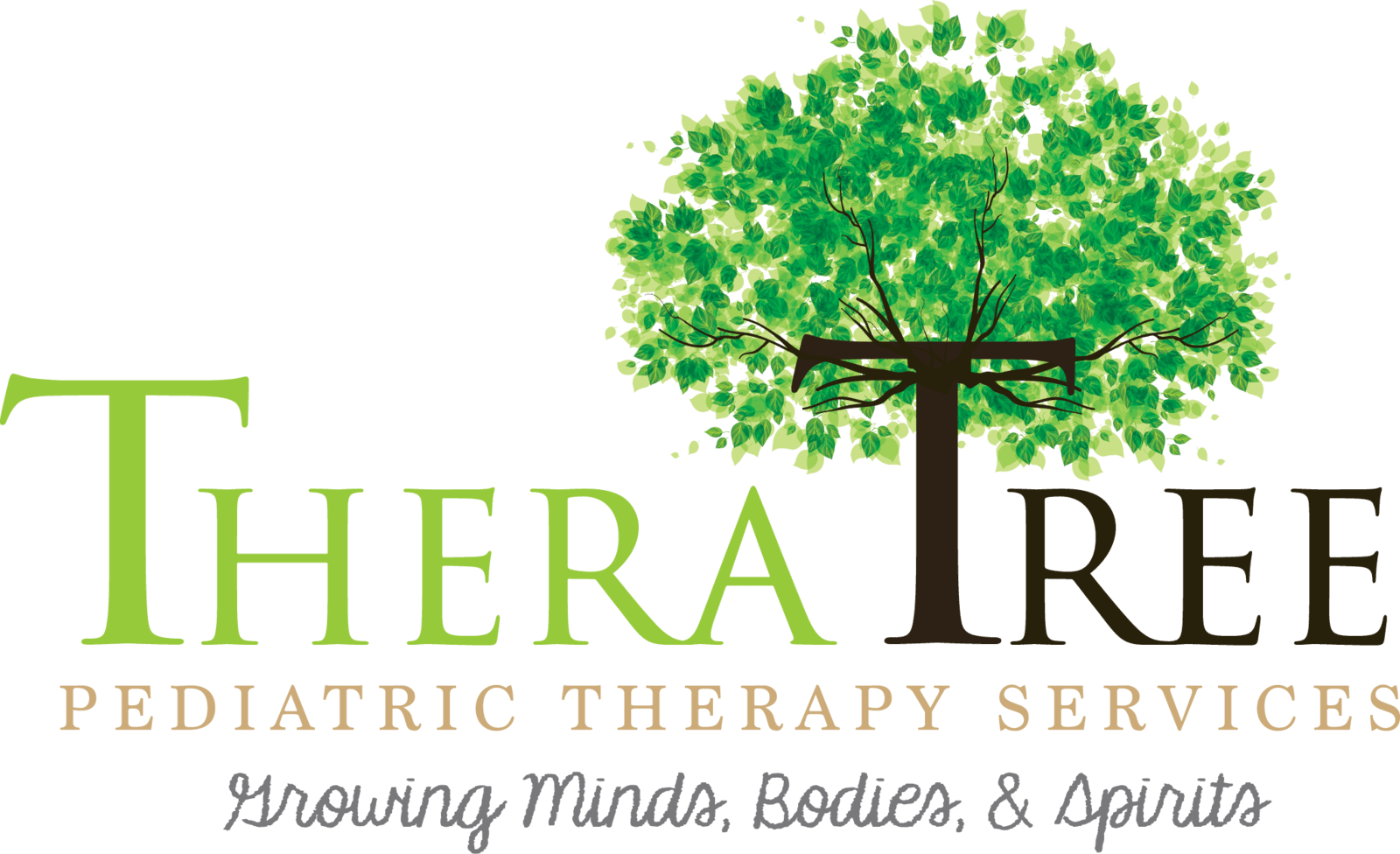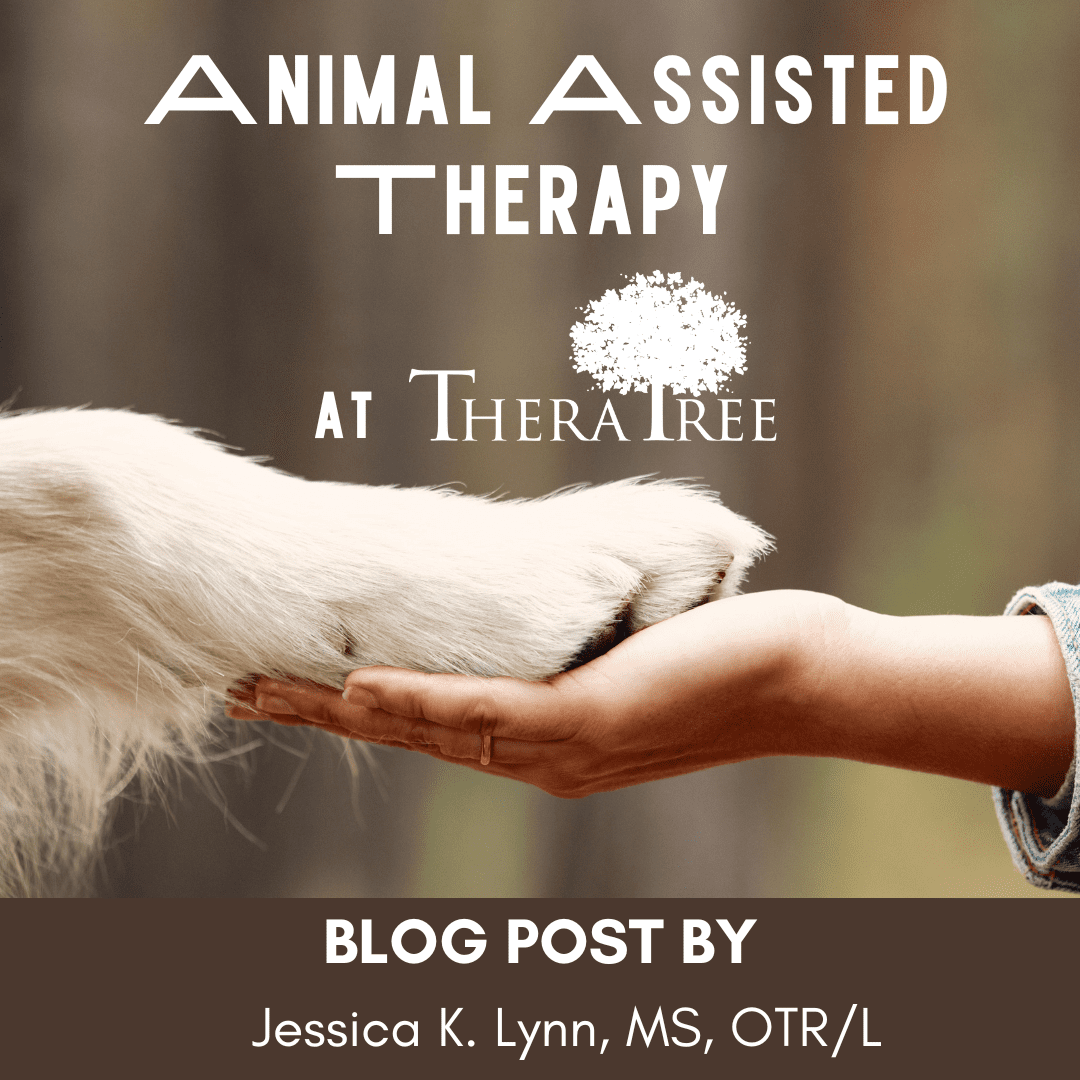
Animal Assisted Intervention
Our Animal Assisted Therapy program has begun with Bo the Certified Therapy Dog!
Animal Assisted Intervention (AAI): An alternative or complementary type of therapy intervention that includes the use of animals as a means to deliver therapeutic intervention in a treatment. Animal-assisted interventions are goal-oriented and structured interventions that intentionally incorporate animals into health, education and human service for the purpose of therapeutic gains and improved health and wellness. There are three specific delivery methods of AAI:
Animal-assisted therapy (AAT)
Animal-assisted education (AAE)
Animal-assisted activities (AAA)
Animal Assisted Therapy
Animal Assisted Therapy (AAT) is a complimentary type of therapy intervention; meaning, it’s added and incorporated into the child’s existing therapy plan of care and goals. The therapy clinician determines if using AAT will help forward progress of your child’s current established goals. If the clinician and family agree that AAT could be beneficial for the child, the clinician will create the therapeutic interventions within their scope of practice that are goal-oriented, planned, structured, documented, then invite the certified Therapy Dog and it’s certified handler to the appointment.
Examples of AAT:
A child learning to button dresses up the dog in a button down shirt.
A child working on speech skills gives the dog commands like “sit” or “stay”.
A child who is afraid of heights jumping with the dog from a platform.

Key Features of AAT:
- Must be overseen by a health and human service provider as part of their profession.
A wide variety of disciplines might incorporate AAT include physicians, occupational therapists, physical therapists, certified therapeutic recreation specialists, nurses, social workers, speech therapists and mental health professionals.
Must incorporate the animal as part of his or her own specialty.
Clinicians acknowledge and work within their own level of competence, education, licensure, and skill set.
Example: A social worker must incorporate the animal in the context of social work. If the same social worker takes the animal to visit a group of children on an informal basis, the visit would be considered AAA, not AAT.
Interventions are planned and goal-directed.
Activities and interactions with animals are goal-specific and measurable, such as improvement in range of motion or fine motor skills.
The goals must be identified and defined in the plan of care before the session or the session can't be considered AAT.
The activities may or may not include direct contact with dog.
The focus of treatment is on the therapeutic process and outcomes. This may include the set-up, planning, and organizing of activity, additional preparation for dog, rather than just completion of a task.
Documented and Billed.
Each session is documented in the client's record, with the activity and progress noted.
Because AAT is incorporated into an existing skilled therapy treatment (not a separate service) the intervention is billed as usual to insurance reflecting the purpose of the intervention.
Animal Assisted Education
Animal Assisted Education is a goal-oriented, planned and structured intervention directed by a general education or special education professional. The focus of the activities is on academic goals, prosocial skills and cognitive functioning, and student progress is both measured and documented.
Key Features of AAE:
Overseen by a credentialed general or special education teacher.
Planned and goal-directed.
While any visit with an animal might be beneficial for a student, unless the goals are identified and defined before the session, the session is not considered AAE.
Documented in an educational setting this may mean it is part of a specific lesson plan or has an associated assessment which documents student progress.
In special education, it may be part of an Individualized Education Plan.
Examples of AAE:
Classroom presentation as part of a unit on responsible pet ownership.
An elementary school coordinates a reading program for youth with speech impediments to practice reading aloud to animals. The session is supervised by the speech therapist who records student progress.

Animal Assisted Activities
Animal Assisted Activities provide opportunities for motivational, educational and/or recreational benefits to enhance quality of life. Although these activities are more informal in nature, they’re delivered by a specially trained professional, paraprofessional and/or volunteer in partnership with an animal.
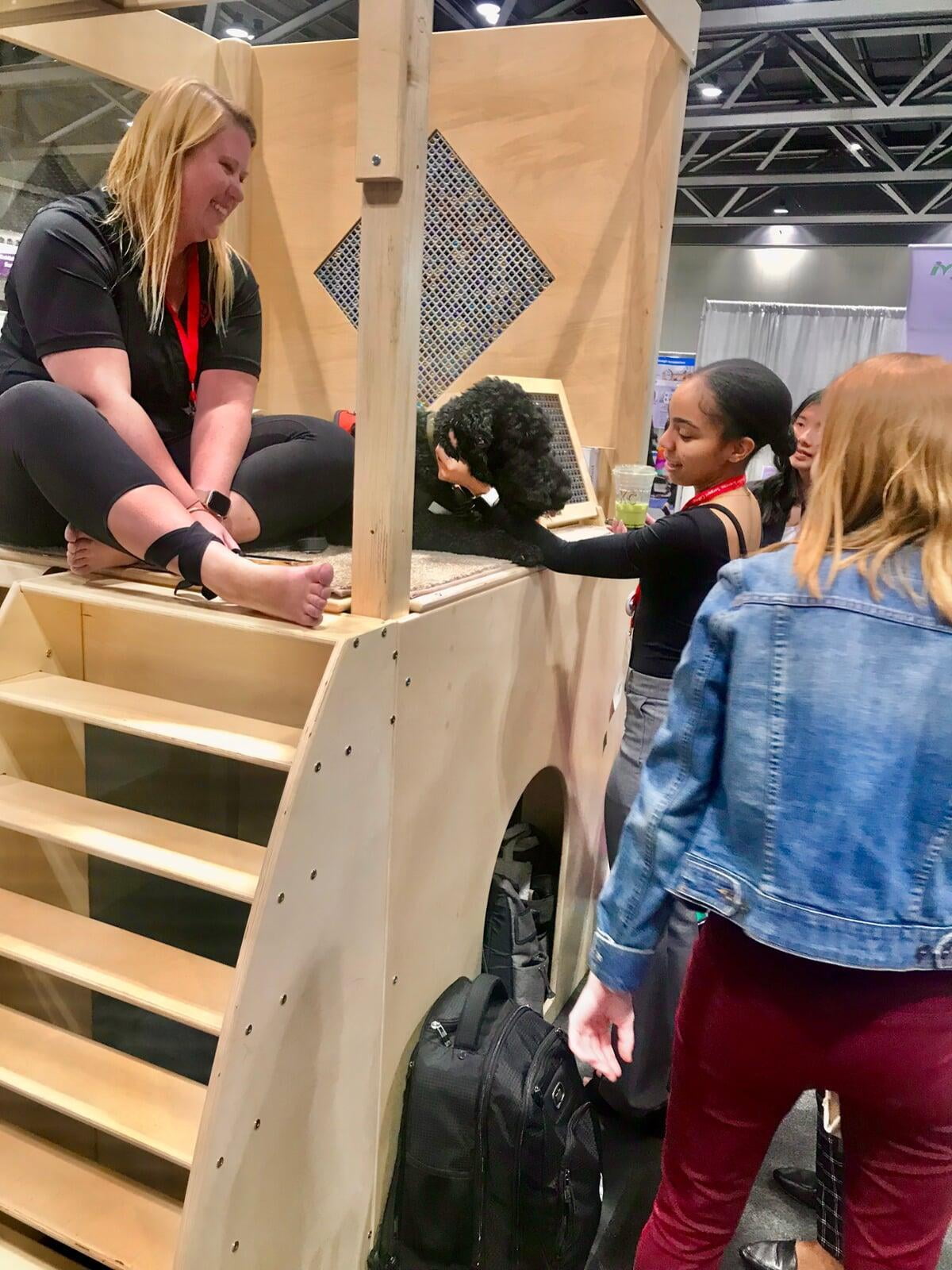
Key Features of AAA:
- This does not occur during a healthcare type setting - this is not the type of intervention completed at TheraTree
- Specific treatment goals are not planned for each visit
- Content is spontaneous and may only last a few minutes
Volunteer type situations at events, or meet and greets
Animal interacts with a non-patient in a healthcare setting
Although the term “pet therapy” was widely used several decades ago, it should be avoided, because it’s inaccurate and misleading. The currently preferred terms imply that the animal is acting as a motivating force to enhance the treatment provided by a well-trained person.
Animal-Assisted Crisis Response (AACR) A subset of animal-assisted activities, animal-assisted crisis response provides comfort to those who have been affected by natural, human-caused or technological disasters. The response environment has the potential to be complex and unpredictable.
Animal-Assisted Workplace Well-Being (AAWW) A subset of animal-assisted activities, animal-assisted workplace well-being incorporates therapy animal interactions in workplace settings, for benefits that range from stress reduction and decreased blood pressure to socialization and community building, along with the potential for increased productivity.
Benefits
The goal of animal-assisted intervention is to address and improve a patient's goals which may including but not limited to the following:
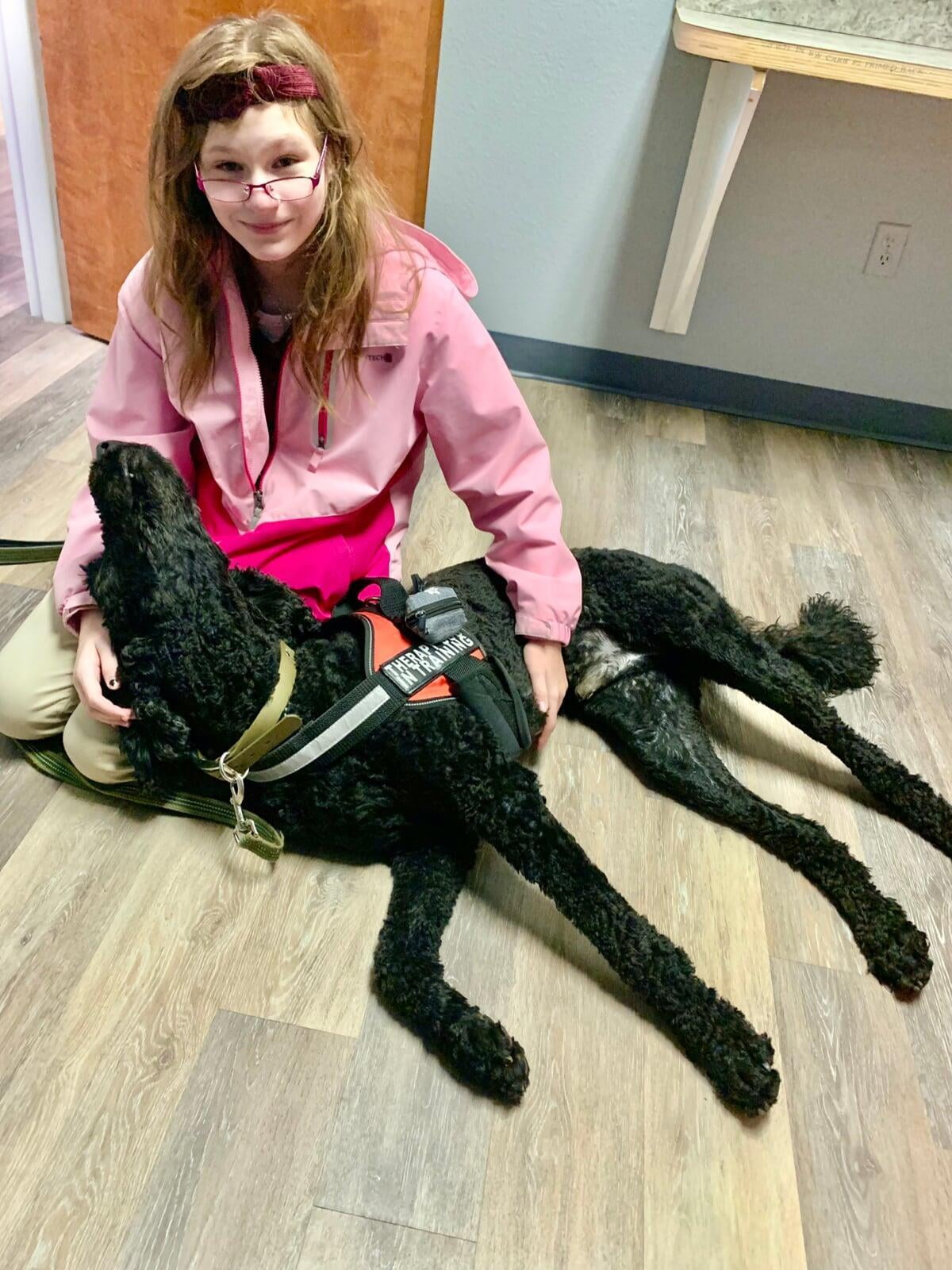
Request Animal Assisted Intervention
If you would like to Animal Assisted Therapy to be included in your child’s therapy:
Discuss AAT with your child’s therapy clinician at your next appointment.
Qualifications of Animals & Handlers
At TheraTree we have a commitment to excellent and evidence based care. Therefore, it’s our policy for clinicians to first complete a 5 hour Animal Assisted Therapy continuing education training which is free, internal, a credit toward required state CEUs, and at their own pace before incorporating AAT into treatment.
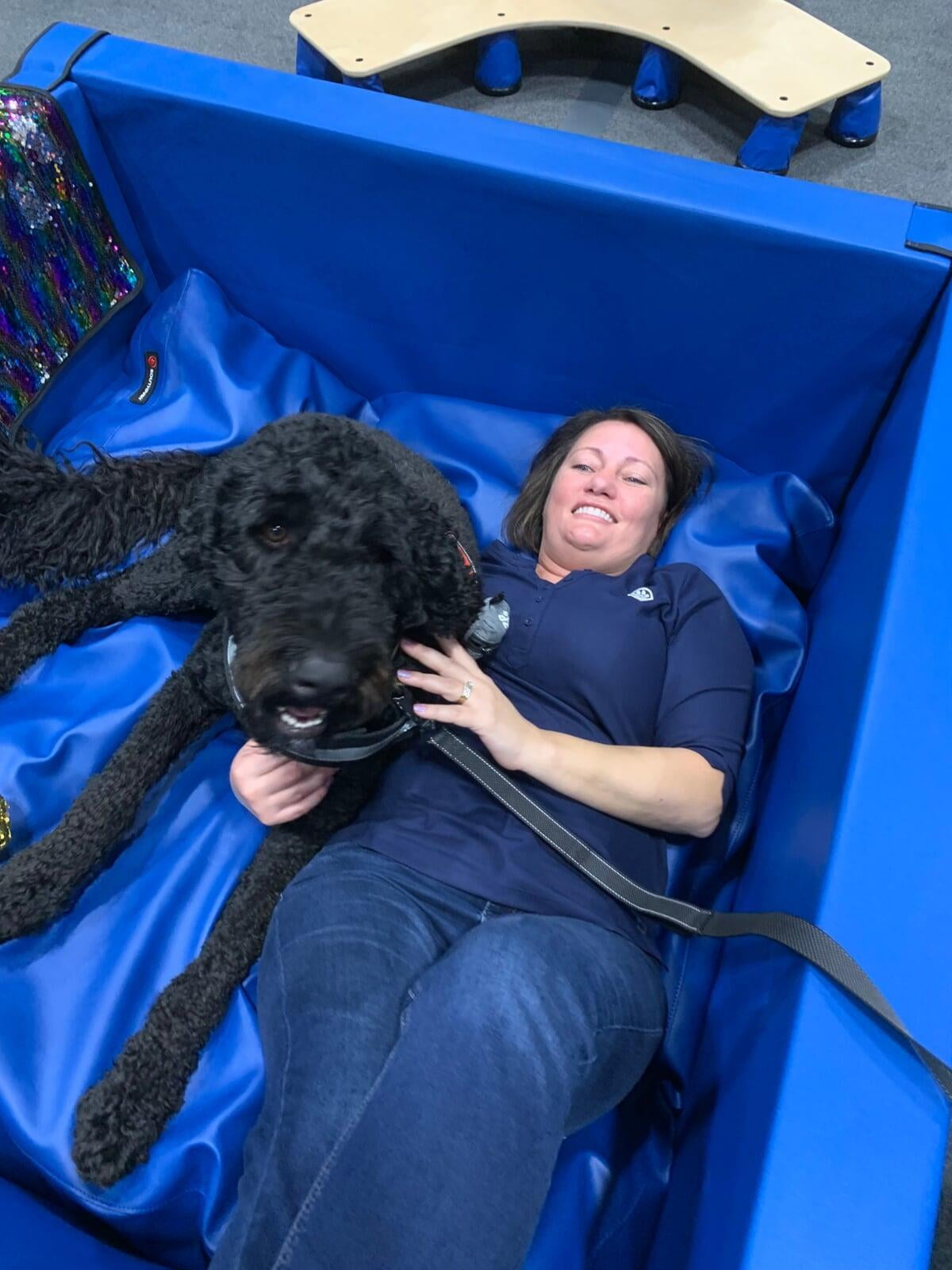
Handler Standards:
- Must be the active handler during the dog's certification tests and maintain certifications.
- Handlers must be able to act quickly enough to remove themselves and their dogs without assistance from a facility in the event of an emergency.
- Must maintain Current Animal First Aid Certification
- Must maintain professional liability insurance.
Animal Behavior Standards:
- Must complete the following standardized behavior certificates.
- AKC Canine Good Citizen Certified
- AKC Community Canine Certified
- AKC Urban CGC Certified
- Alliance of Therapy Dogs Certified
- Must pass on site competency by TheraTree’s AAI Coordinator
- Affect: enjoyment, relaxed, confident, focused
- Interactions: welcomes attention from stranger, interaction in suitable ways, neutral when encountering other dogs, maintains good communication with handler,
- Obedient: exhibits self control, reliable, predenticle, controllable, responds to basic obedience cues.
- Safe: maintains loose leash, stay close to handler, licks only when cued, doesn’t vocalize,
- Equipment: Must have all the required equipment to promote safety and wellbeing.
- Leash: Maintains safe and close leash walking behaviors.
Animal Health Standards:
- Current on vaccination and certification of health by their veterinarian including: Bordatella (kennel cough) vaccine, Distemper, Adenovirus, Parvovirus, +/- Parainfluenza, Canine influenza, Leptospira, Lyme disease, Rabies (Titer levels of 0.5 IU or greater are acceptable and must be measured every two years to ensure levels are acceptable.)
- Must be free of any signs of ill health while in the clinic. Animals with physical and medical disabilities must have veterinarian approval documentation that their disability does not pose harm or a safety risk to themselves or any other staff or patient in the clinic. Participation must not compromise the animal’s health and wellbeing.
- Dogs must be clean and well groomed. (See AAI requirements for specific definitions)
- Must be non-shedding.
The goal of animal-assisted intervention is to address and improve a patient's goals which may including but not limited to the following:
